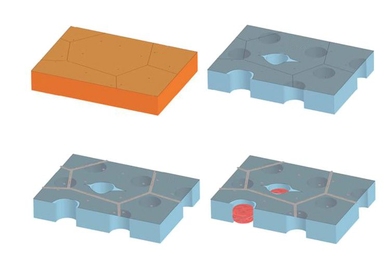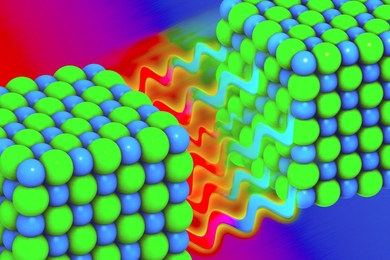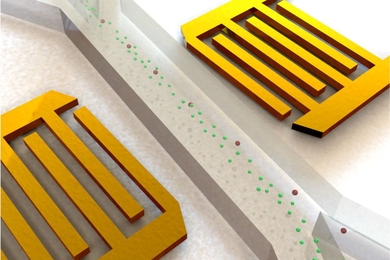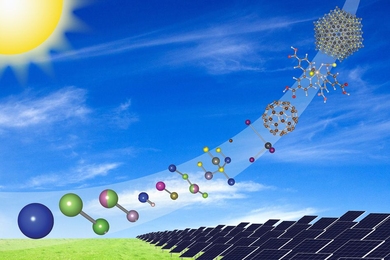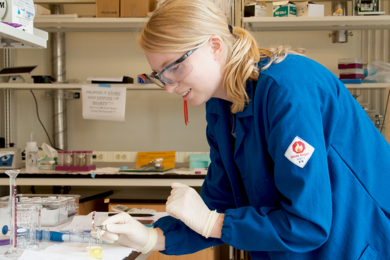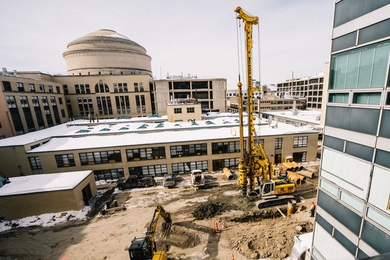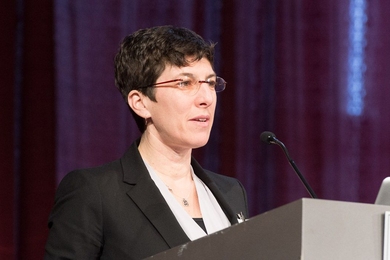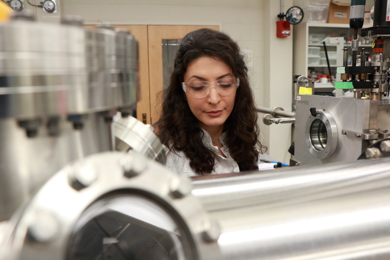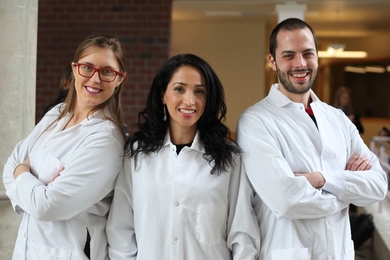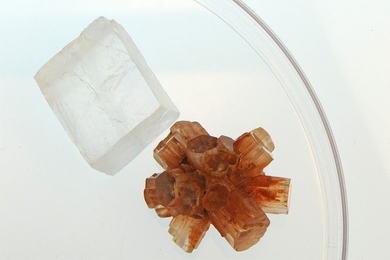MIT sensor detects spoiled meat
Tiny device could be incorporated into “smart packaging” to improve food safety.
Taking aircraft manufacturing out of the oven
New technique uses carbon nanotube film to directly heat and cure composite materials.
Tunneling across a tiny gap
“Phonon tunneling” explains heat flow across nanometer-wide gaps, study finds.
Using sound waves to detect rare cancer cells
Acoustic device can rapidly isolate circulating tumor cells from patient blood samples.
Analysis sees many promising pathways for solar photovoltaic power
New study identifies the promise and challenges facing large-scale deployment of solar photovoltaics.
New materials to protect the brain
MIT graduate student Bo Qing studies synthetic gels that could be used in better equipment to protect against traumatic injuries.
Magnetic brain stimulation
New technique could lead to long-lasting localized stimulation of brain tissue without external connections.
Materials Processing Center marks 35 years
Service to faculty, collaboration with industry are hallmarks of campus-based Materials Processing Center at MIT.
How it’s made
A seminar series on the nuts and bolts of constructing a 200,000 square-foot nanotechnology laboratory comes to MIT.
MIT’s sustainability community gets to work
Inaugural event brings together over 100 campus leaders to plan for greater efficiency, reduced waste.
Squitching behavior
MIT graduate student Farnaz Niroui demonstrates squeezable nano electromechanical switches with quantum tunneling function.
New nanodevice defeats drug resistance
Tiny particles embedded in gel can turn off drug-resistance genes, then release cancer drugs.
Mystery solved: Why seashells’ mineral forms differently in seawater
Century-old riddle about aragonite formation is unraveled by scientists’ atomistic simulation.
